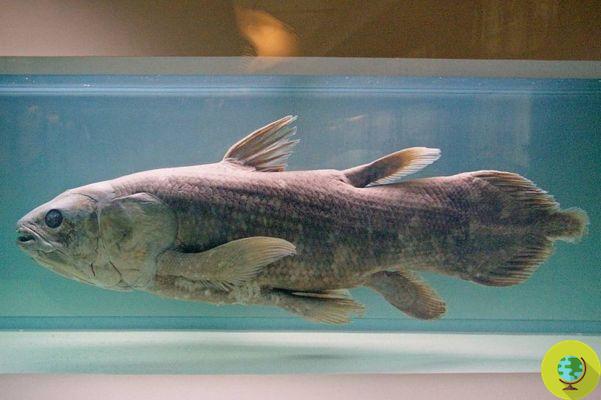
It can be considered a "living fossil" fish, capable of living for 100 years, much longer than previously estimated
It can be fully considered a "living fossil", capable of living for 100 years, in the depths of the ocean against the 20 hypothesized so far. But that's not the only thing about it. Giant coelacanth has populated our seas for hundreds of millions of years.
This incredible creature was believed to have been extinct for 1938 million years until 66. Then a series of specimens were sighted. Since then, coelacanth has become the subject of numerous research studies. The new study, just published, specifically sought to shed light on the reproduction and lifespan of what is one of the most endangered most protected species in the world.
With a weight of about 90 kg and a length of about 2 meters, the giant coelacanth has populated the oceans since the time of the dinosaurs, thus managing to survive up to us. The rarity and deep habitat of these fish has made them difficult to study, but a new look at one of the species has now revealed that it could live much longer than we thought.
How much time? Initially it was thought that they could live for about 20 years but in light of the new findings they could easily survive beyond a century. Among other novelties discovered on these animals, it emerged that they have slow metabolisms and low fecundity.
Our most important finding is that the age of the coelacanth has been underestimated by a factor of five. Our new era estimate has allowed us to reevaluate the body growth of coelacanth, which appears to be one of the slowest of similar sized marine fish demonstrating that coelacanth's life story is actually one of the slowest fish,
said marine biologist Kélig Mahé, of the IFREMER Institute in France who conducted the study.
Mahé and his colleagues were able to study the largest group of coelacanth specimens ever seen: 27 fish in total, ranging in age up to what the team suspects is 84. They established that they reach maturity around 55 years and that the gestation of the offspring lasts about five years.
Earlier this year, another study revealed that the huge fish has borrowed genes from other marine species over the years, through a process known as horizontal gene transfer. Genetically speaking, this could shed light on our own evolution.
The results also highlighted how endangered the species is and this time it really is. Animals that grow and reproduce at a slower rate are increasingly vulnerable to death, and the researchers behind the new study want to make sure that doesn't happen.
Long-lived species with a slow life history and relatively low fecundity are known to be extremely vulnerable to natural or anthropogenic disturbances due to their very low replacement rate.
Mahé continues.
Our findings therefore suggest that it may be even more threatened than expected due to its unique life history. Consequently, this new insight into the biology of coelacanths and their life history is essential for the conservation and management of this species.
The research was published in Current Biology.
Sources of reference: Sciencealert, Current Biology
READ also:
- 65-million-year-old fish believed to be extinct has been spotted again in a river, the rarest in the world
- The Chinese paddlefish, one of the largest fish in the world, is officially extinct
- Bird missing for 172 years observed in the rainforest of Borneo: it was believed extinct


























